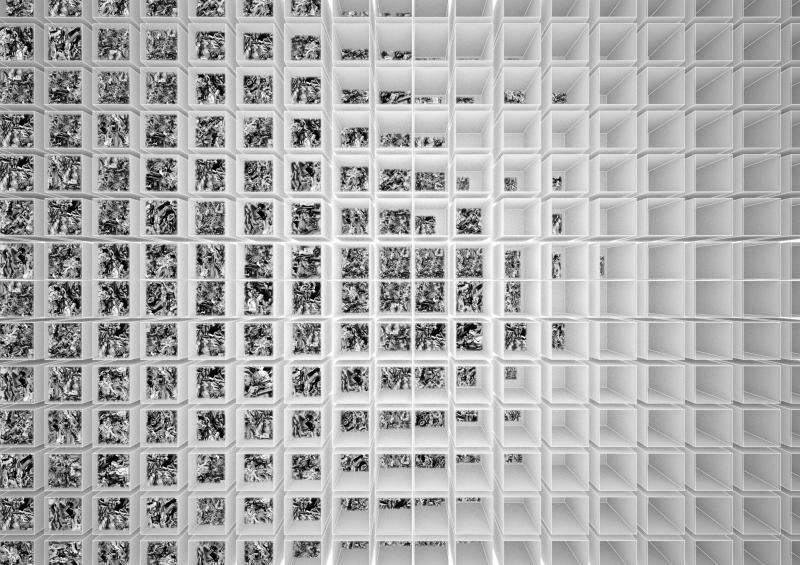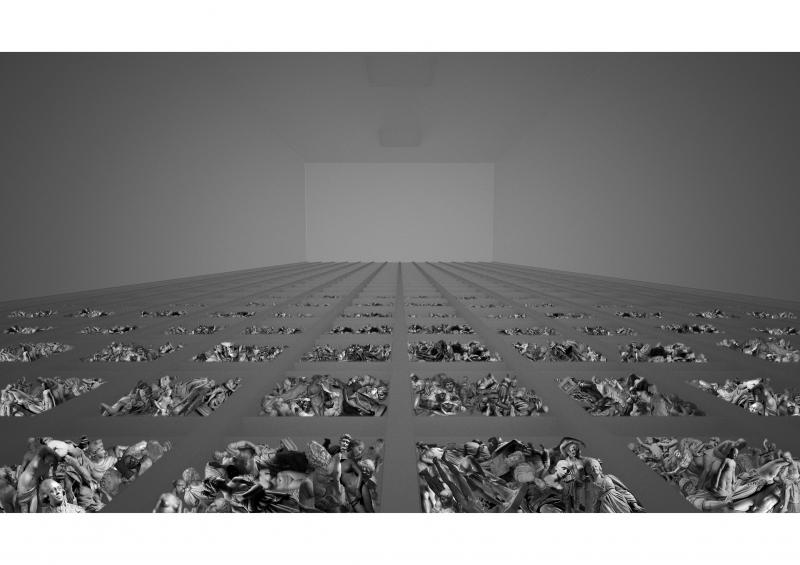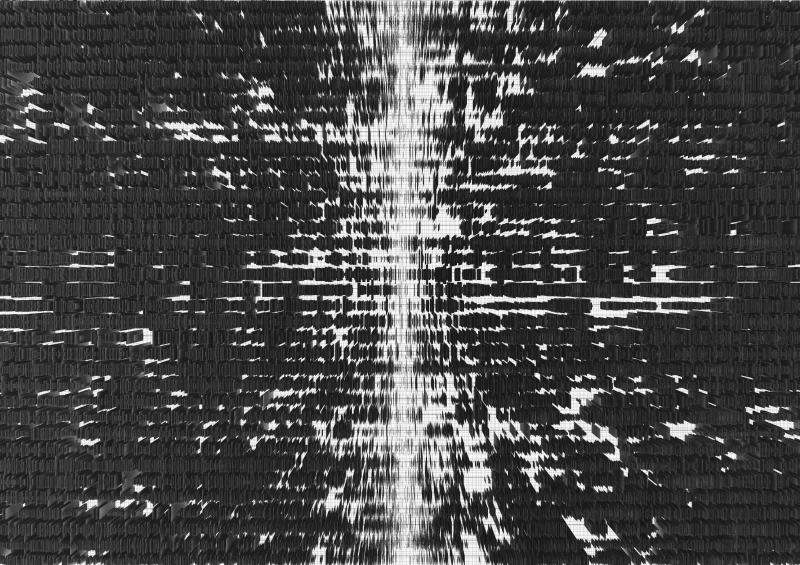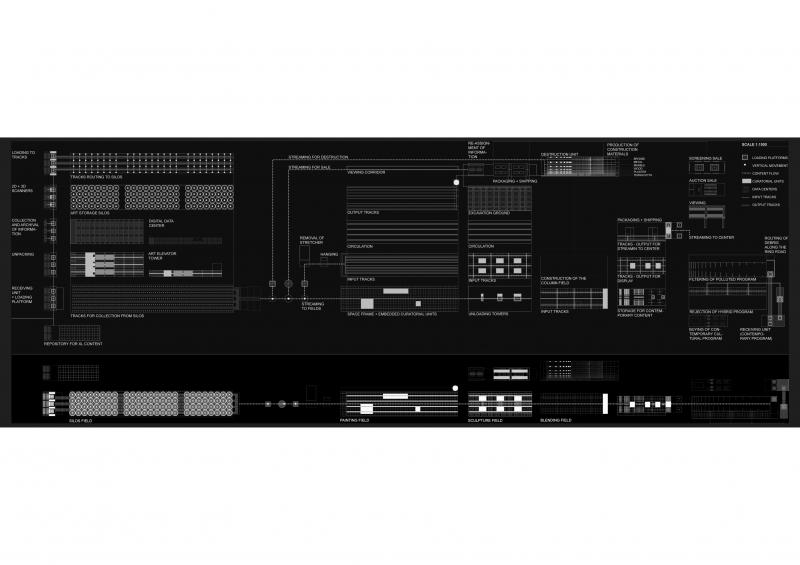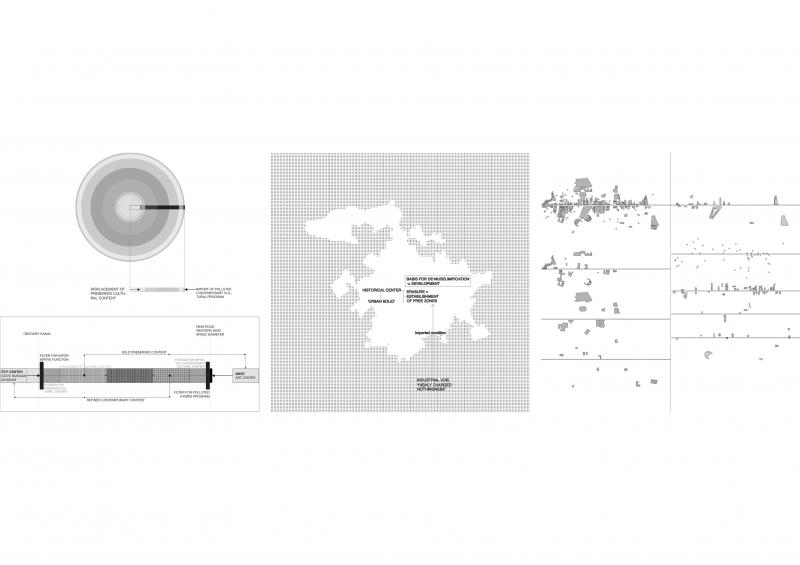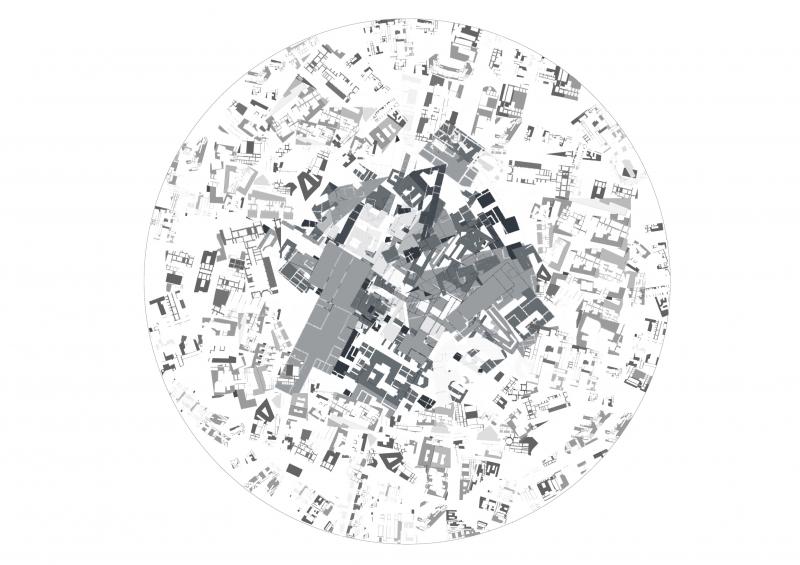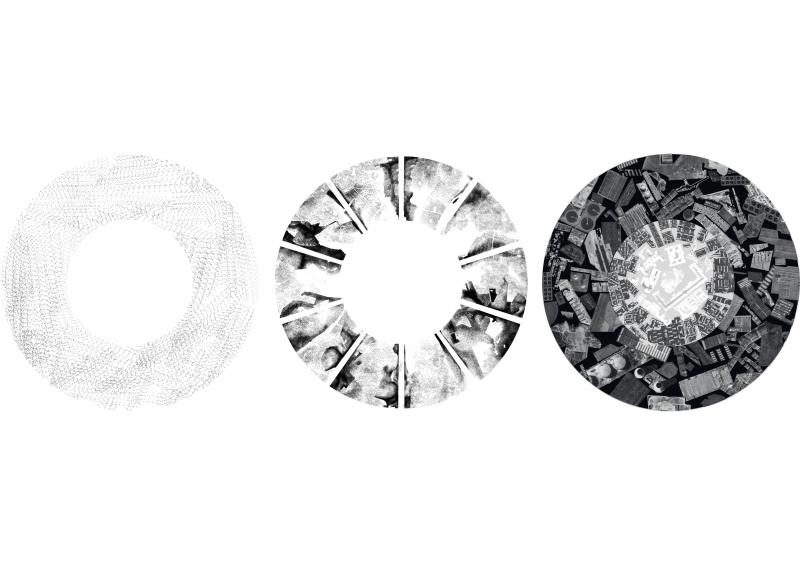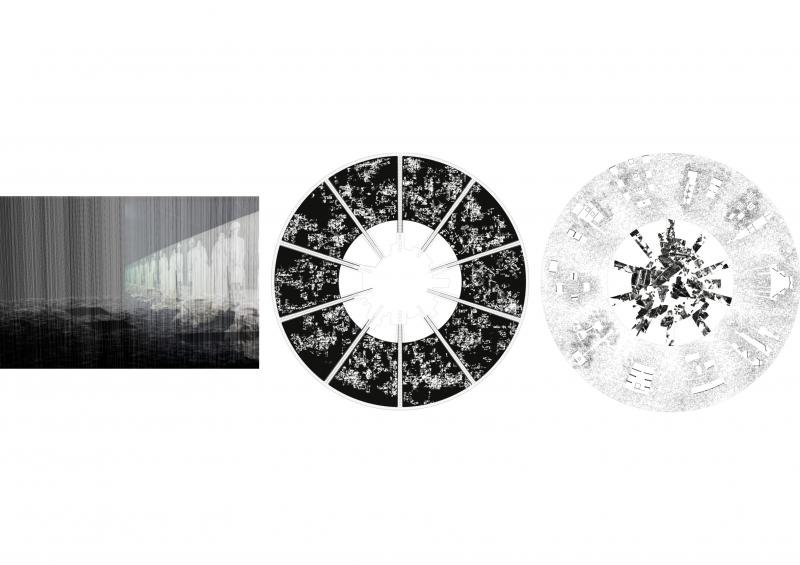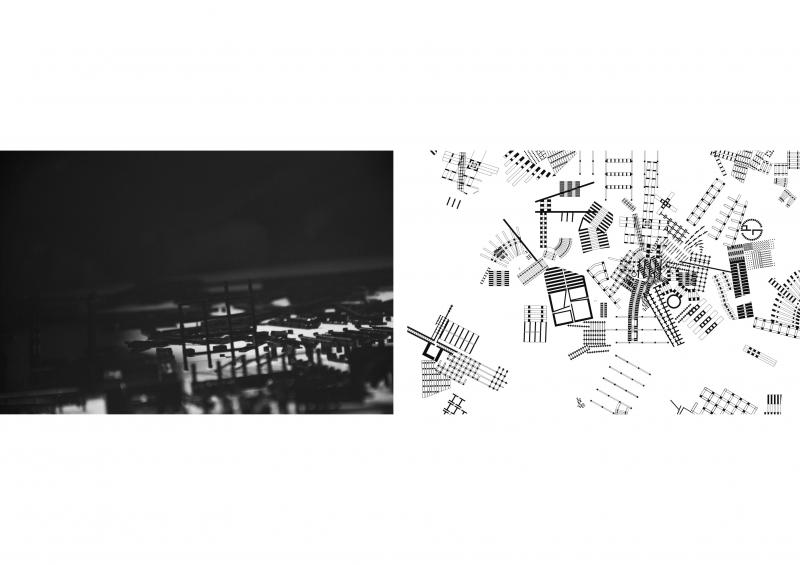DARK CYCLE OF CULTURE
The project develops as a critique to the implosive and self-defeating system of preservation in St Petersburg and the inability of the city to produce new culture. It also positions itself against the commercialization of the art-world and as an alternative to the imported western models for development in the cultural sphere.
The project defines a new type of DARK SPACE. Dark Space has no program and emerges as part of an urban cycle where cultural content is:
- EXTRACTED from the preserved center, vacating the museums and creating space for contemporary development;
- It is then DISPLACED to the peripheral ring of the city and processed as raw material;
- IMPORTED from the west, as mixed with polluted and highly hybrid program;
- And finally, FILTERED for the consequent streaming into the vacated historic center through a series of ‘Ladders’.
The urban strategy of displacement takes advantage of the polarization between the ‘Centre’ and the ‘Ellipsis’, unfolding at the threshold outlined by the boundaries of preservation. At the scale of the site, it operates as an ART MILL, an infrastructure for processing of cultural content. Here, displaced content is processed, sold or destroyed; it is stripped from its informative function, its supports and ultimately its cultural value. This way, I can gradually dissolve the systems that dominate the center and ways of dealing with cultural program.
SCULPTURE REPOSITORY
PAINTING FIELD
ART MILL INFRASTRUCTURE
Infrastructure for the processing of the preserved cultural content that allows for the critique and gradual dissolve of the established ways of dealing with cultural program.
URBAN STRATEGY OF DISPLACEMENT AND IMPORT
Cultural content is displaced as part of an urban cycle that imports contemporary cultural program from the west and processes preserved local content.
The displacement takes advantage of the polarisation between two concentric rings of the city, clearly defined by the boundaries of preservation, to install a cycle of displacement between what is referred to as separate cities: the Light city and the Dark city.
DEBRIS OF HYBRID PROGRAM + FILTERED 'LADDERS'
Contemporary cultural content that is imported from the west exists as part of a highly hybrid mix of programs.
When it reaches the Art Mill it is thus processed, producing a refined, pure display program that will be allowed into the historic city centre and a debris of polluted, highly hybrid program that will be rejected from the infrastructure and streamed across the ring road.
PERIPHERAL URBAN RING
Dark Space exists in the nervous ring of industrial districts that surrounds the cultural center, defining an urban organization based on center and periphery.
Dark Space will emerge in opposition to:
- The immunity to time of the preserved centre - as entropic residue or space effected by rapid change and decay;
- The over-structured, highly striated organisation of the centre - as a (smooth) space defined by field conditions that emerge through gradients and moments of intensity.
DISPLACEMENT WITHIN DARK SPACE
Dark Space is heterogeneous and formed by the aggregation of fragments - IN OPPOSITION to the homogeneity of the centre and its reliance on geometrical overarching schemes, (such as) axiality, symmetry.
ARCHITECTURAL FRAGMENTS
Fragments are sampled by spaces that have lost their program, that are marginal and left behind.
They form a system that allows for infinite expansion towards all directions, - in opposition to the centripetal system that encloses the centre.
PROCESSING UNITS
Displaced content is loaded into the ART ELEVATOR. As it travels through the elevator tower it looses layers of information which are digitally condensed and archived in the data centre.
Once stripped of its informative function, the artwork is routed to the silos and stored regardless the academic principles and historical values of the museum.

